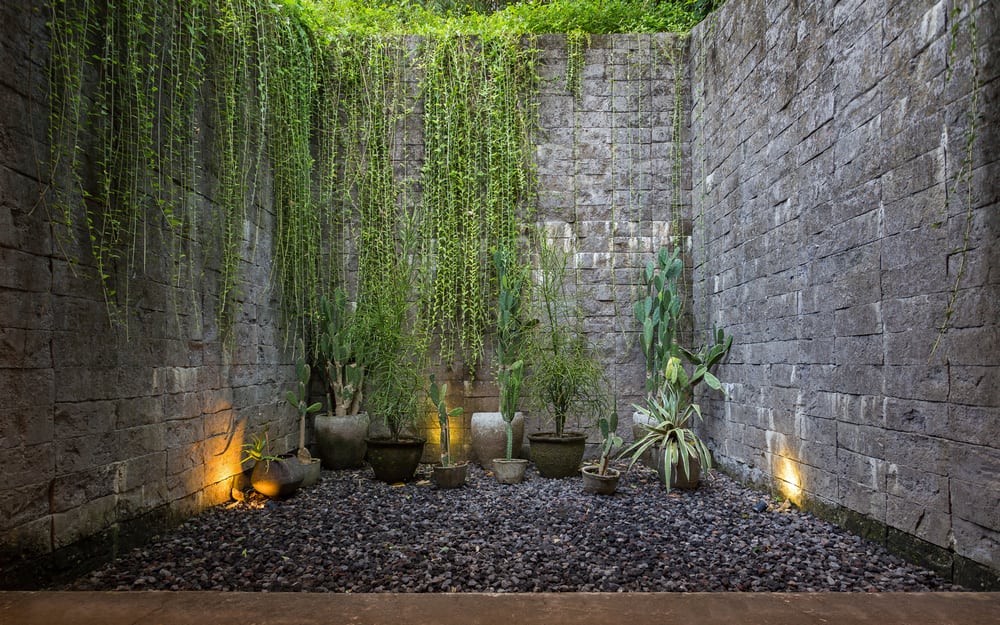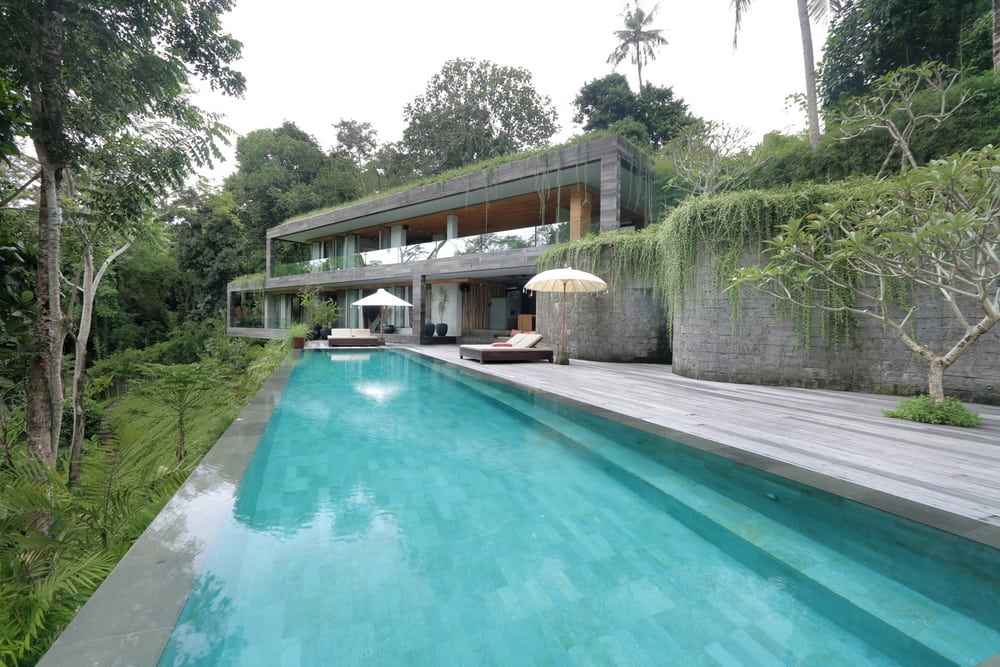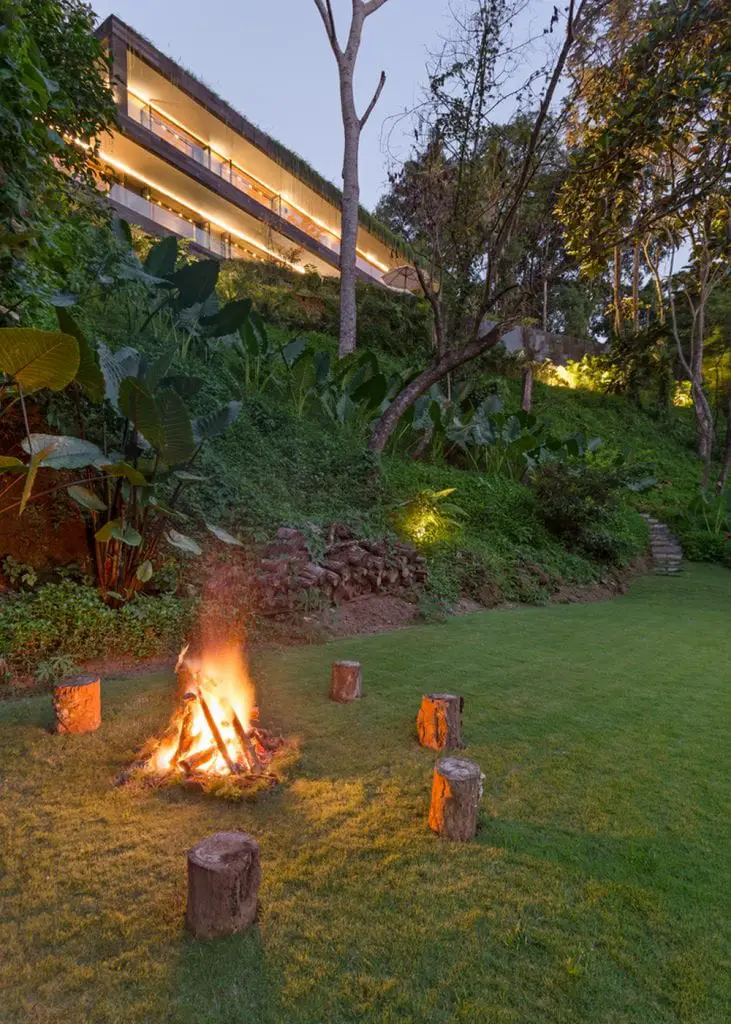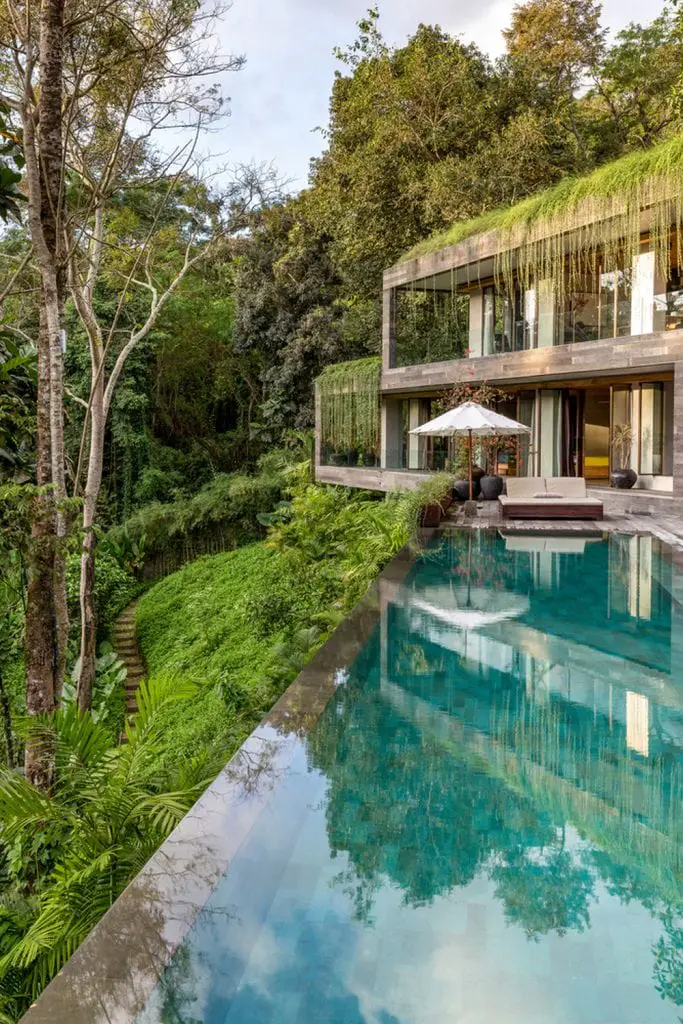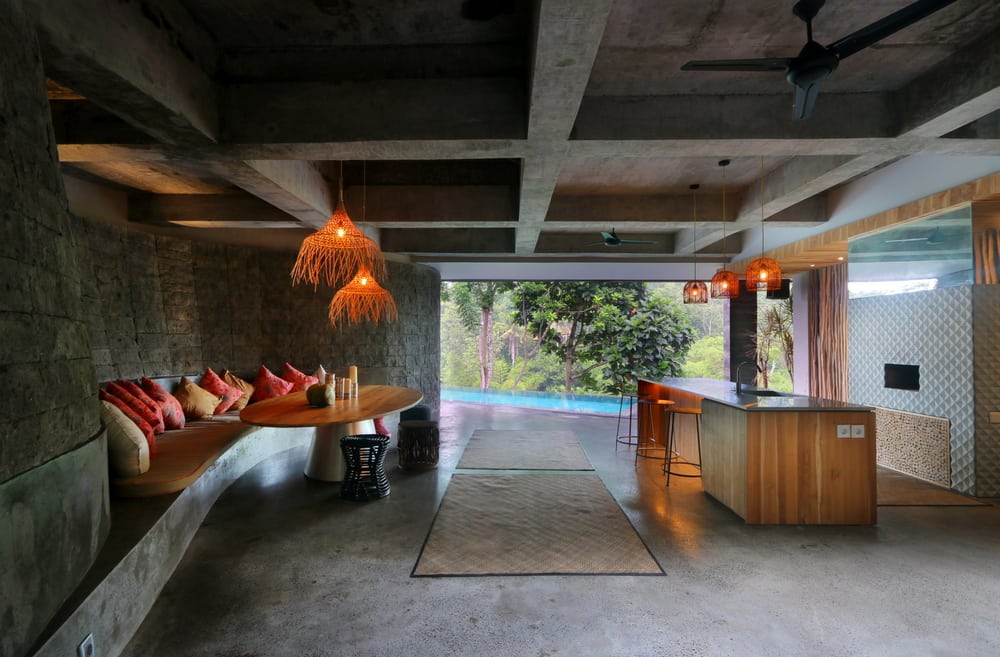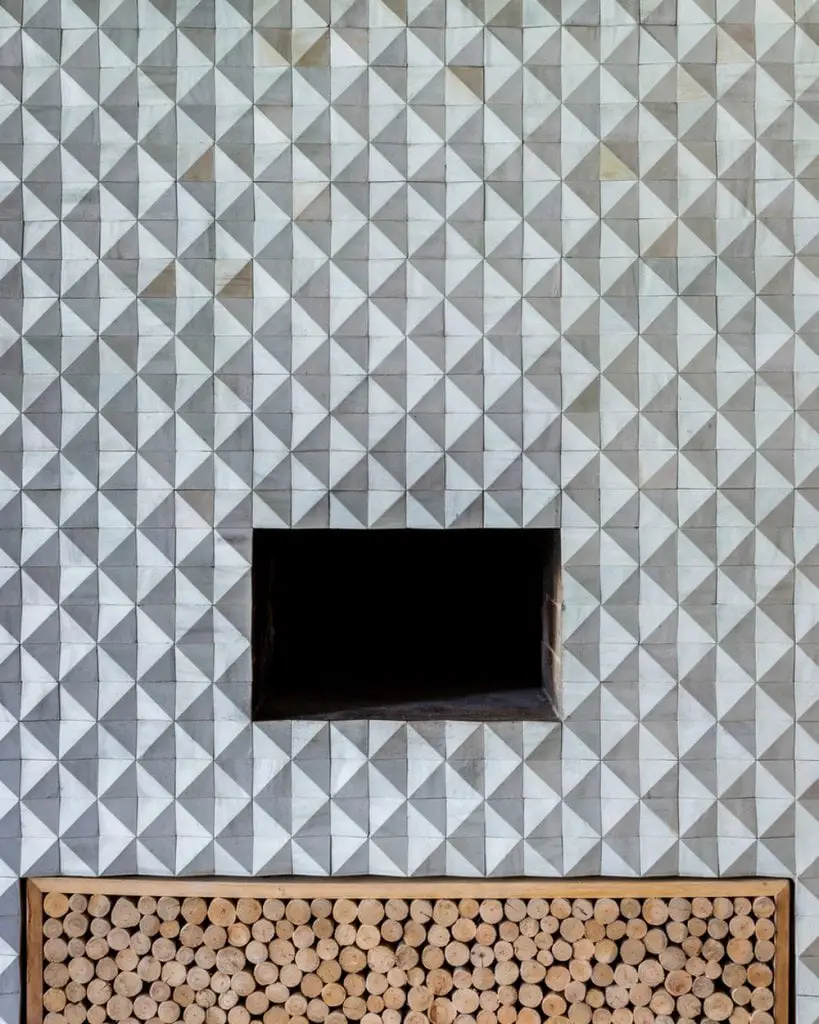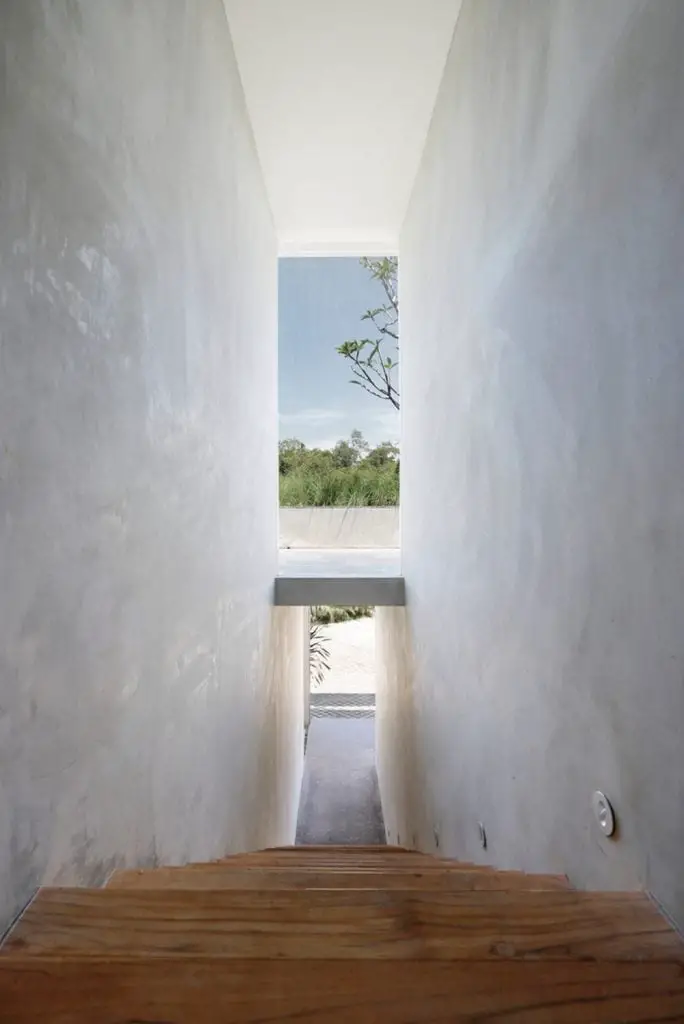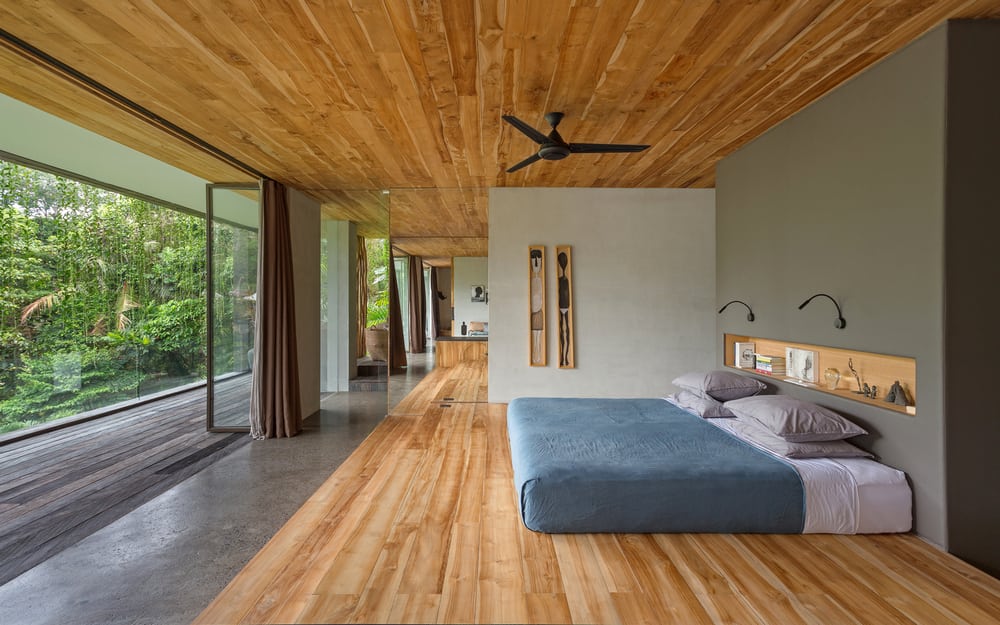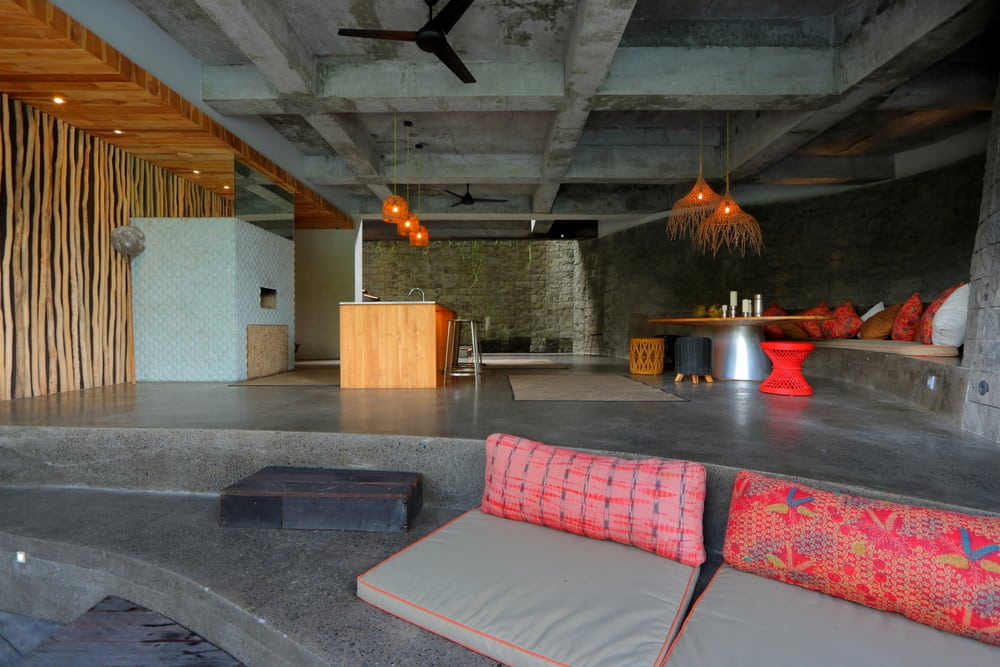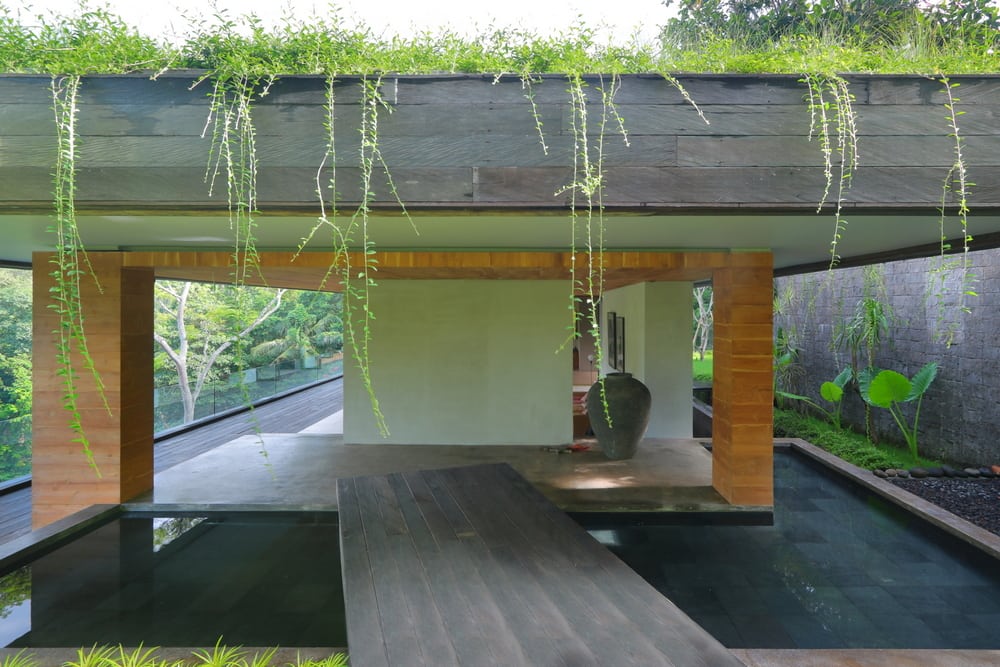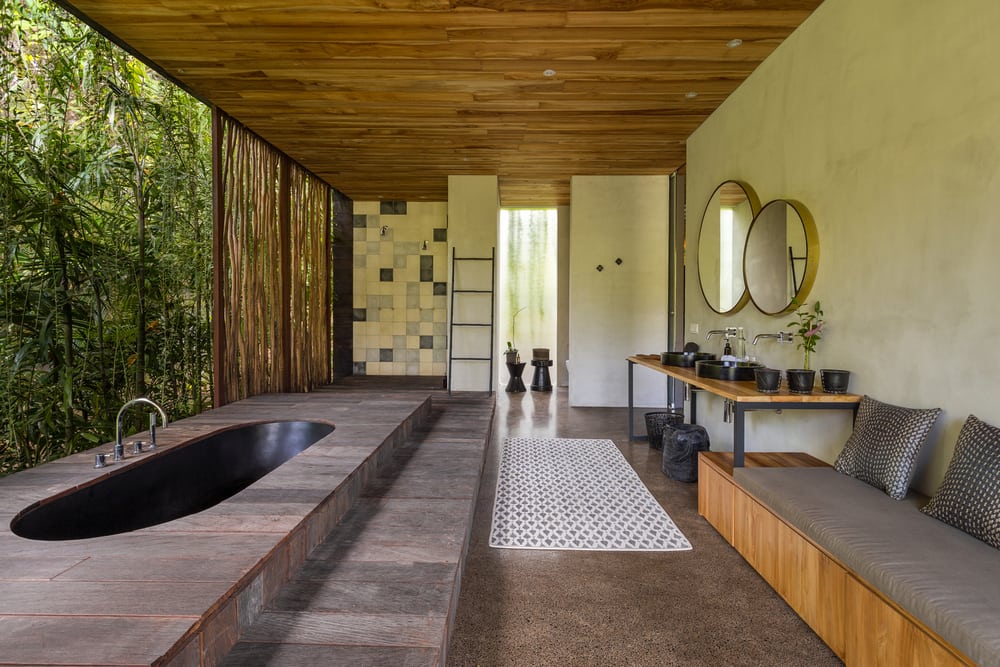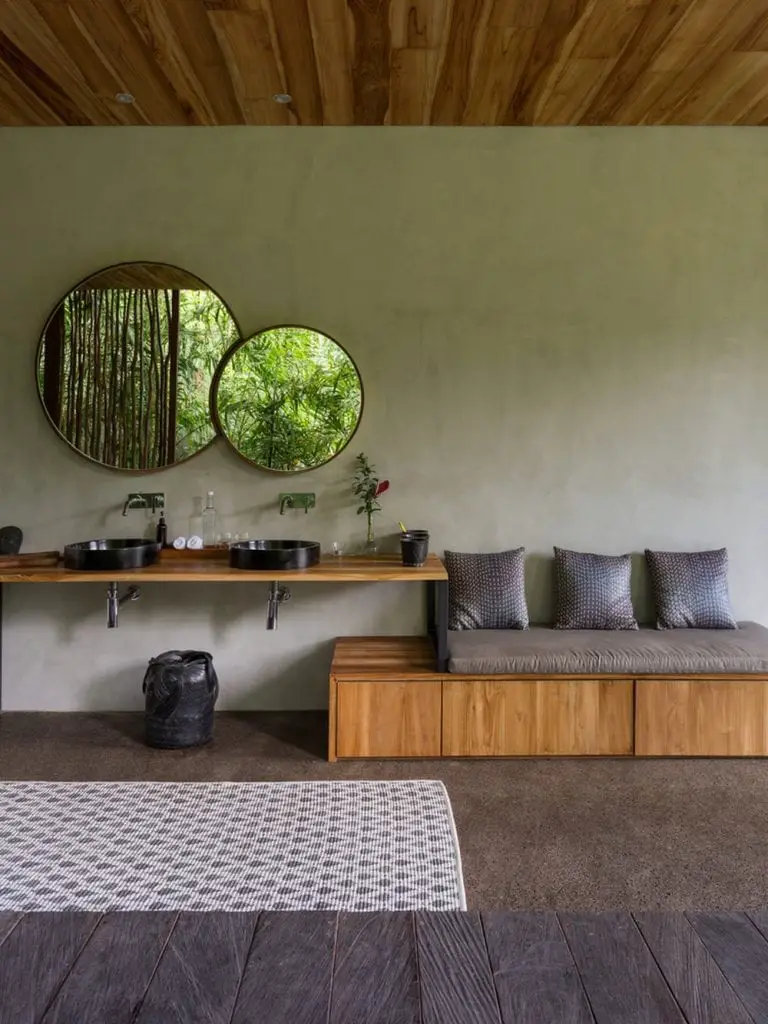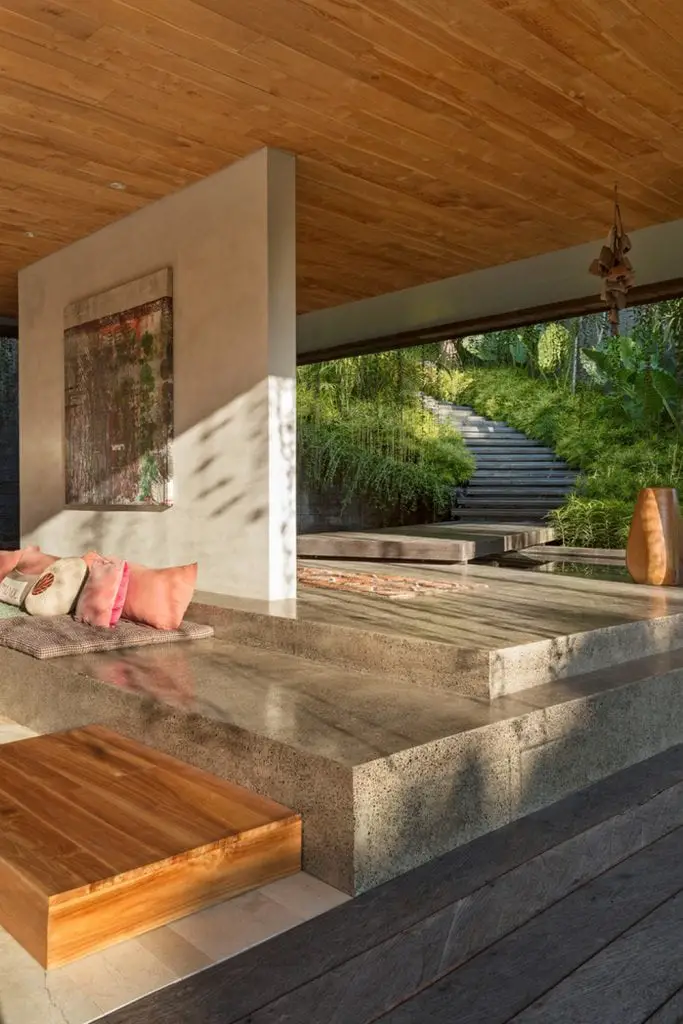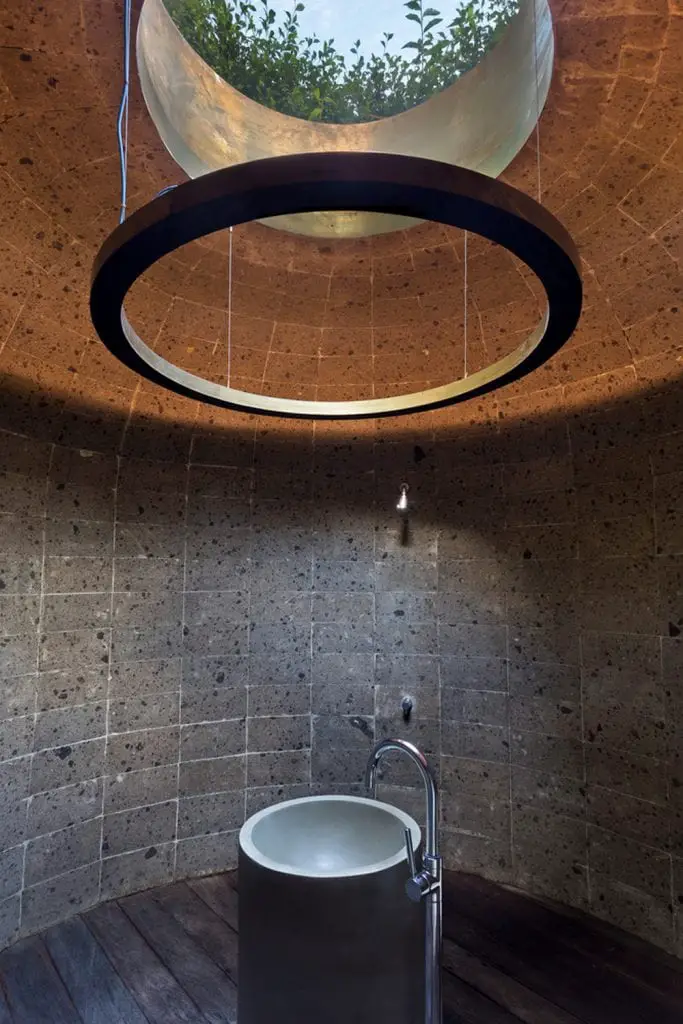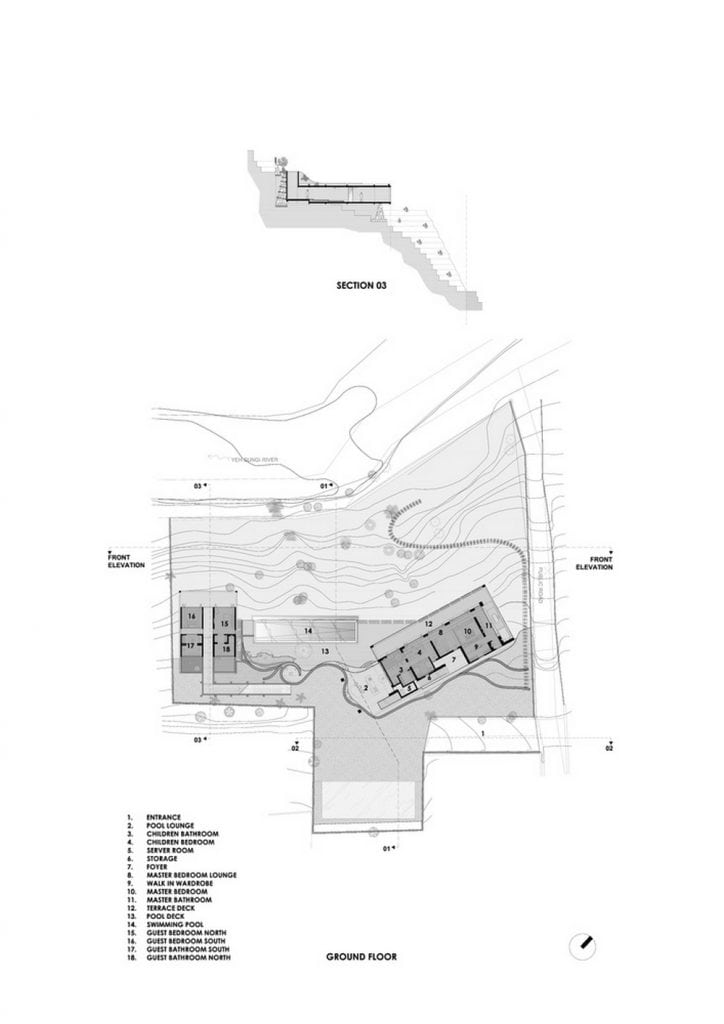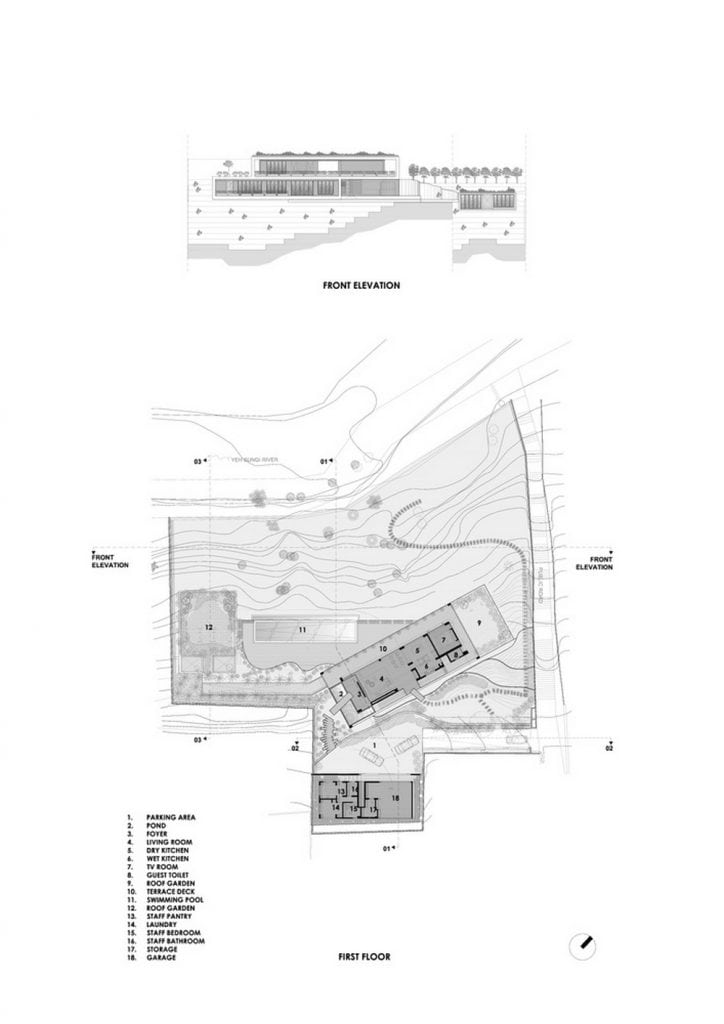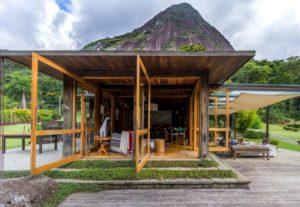Post Contents
Kediri, Indonesia – Word of Mouth House
Built Area: 1015.0 m2
Year Built: 2017
Photographs: Daniel Koh, Word of Mouth
Chameleon Villa is a relaxing forest retreat sitting on a steep slope, buried in the mountainside. It is made up of multiple levels with the concrete building covered in dense foliage. Courtyards and glass walls ensure that the house remains open despite its concealment. These effectively blur the lines between the indoors and outdoors.
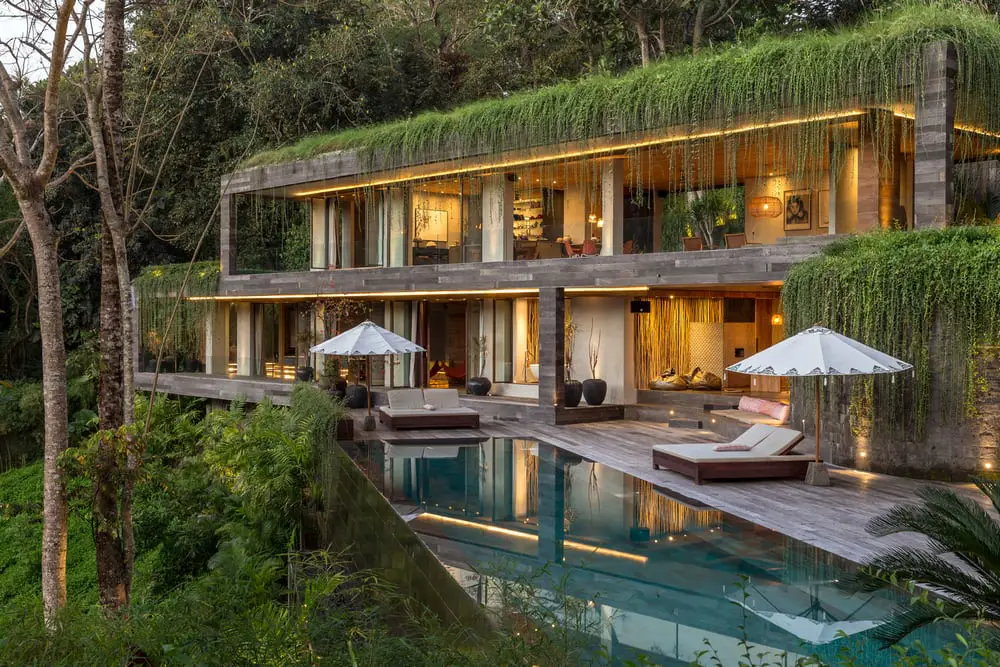
The villa’s design is a nod to traditional Balinese architecture. It has multiple pavilions used for various purposes. Communal spaces such as the kitchen, living and dining areas open up to the elements. On one hand, bedrooms are kept private.
Materials used throughout the house are natural and locally sourced. The interiors are warm and comfortable, with earth-toned palettes playing a dominant role. Timber floor and ceilings all add up to create a cozy, inviting, and restful retreat.

It’s obvious that much thought went into the architectural design of the home. Small details are evident – pure sources of delight when you least expect them. Chameleon Villa is a breath-taking home set in a breath-taking landscape.
Notes from the Architect:
“Chameleon Villa” is a residence located in the area of Buwit, a village in the lush interiors of the southwest coastal area of Bali. Constructed on an acre of land, overlooking a dense forest and a gentle river below, the villa sits on a steep contour with an 11-meter difference of level between the arrival area and the river that runs the western length of the property. Given such a spectacular location, the challenge was to create an architecture that truly connected with its surroundings and that integrated well with the topography of the site.
We worked on the idea of ‘landscaped architecture’, by blurring the boundaries between natural and built environments. As a result, the buildings appear to be a part of the land itself sometimes disappearing within it, and then at other times, emerging from it.
The buildings are situated on different levels of the land and they follow the contour lines in a way to take in the vantage points towards the river below and the forest across. The rotation of the volumes on the land follow these criteria and allows the creation of in – between spaces and gardens to enjoy which would otherwise be difficult to experience on a land of such a steep pitch.
As per traditional Balinese architecture the different pavilions accommodate different functions and all communal spaces are kept open towards the elements whereas the bedrooms and other more private spaces such as office, gym and media room are closable volumes.
Throughout the property a sense of discovery develops from the moment we land in the parking. Across us we can only see an uninterrupted view of the forest ahead to then discover we are looking over the roof of the building below, to the moment we dive into a deep slit in the land and we find out it is the way to the guest bedrooms positioned at a lower level.
The main building which is on two levels follows the idea of rectangular volumes stacked on one another off-axis as if they were resting on the land.
They are composed of an outer frame which holds and protects the inner one where people would tend to spend most of their time.
The purpose of the outer frame is to protect the spaces from the elements and provide insulation. The supporting ‘camouflaged’ roofs provide a cooling effect to the spaces below and assist with rainwater collection whereas the spaces below these frames have been used to store all the technical equipment.
The result is a composition of volumes that are clean and modern but at the same time they feel ‘earthy’ and organic.
The material palette is largely comprised of natural and locally sourced materials, meaning that not only could local suppliers and artisans be supported by this initiative, but it also minimized the home’s carbon footprint.
Green systems considered for this project, besides passive cooling and sustainable materials selection, have been the use of solar panels to produce electricity and a water recycling and rainwater collection system for garden irrigation.
In adopting this approach, the material composition and renewable energy systems become a true reflection of the building’s location and an advantage for the maintenance and efficiency in its use.
Click on any image to start lightbox display. Use your Esc key to close the lightbox. You can also view the images as a slideshow if you prefer. 😎
Exterior Views:
Interior Views:
Drawing Views:
For other interesting architecture, check out China’s Crosswaters Ecolodge…



